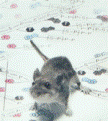Papers in the Biological Sciences

Jay F. Storz Publications
Document Type
Article
Date of this Version
11-2001
Abstract
Here we report an assessment of the determinants of effective population size (Ne) in species with overlapping generations. Specifically, we used a stochastic demographic model to investigate the influence of different life-history variables on Ne/N (where N = population census number) and the influence of sex differences in life-history variables on Ne for loci with dif¬ferent modes of inheritance. We applied an individual-based modeling approach to two datasets: one from a natural popu¬lation of savannah baboons (Papio cynocephalus) in the Amboseli basin of southern Kenya and one from a human tribal pop¬ulation (the Gainj of Papua New Guinea). Simulation-based estimates of Ne/N averaged 0.329 for the Amboseli baboon population (SD = 0.116, 95% CI = 0.172 – 0.537) and 0.786 for the Gainj (SD = 0.184, 95% CI = 0.498 – 1.115). Although variance in male fitness had a substantial impact on Ne/N in each of the two primate populations, ratios of Ne values for au¬tosomal and sex-linked loci exhibited no significant departures from Poisson-expected values. In each case, similarities in sex-specific Ne values were attributable to the unexpectedly high variance in female fitness. Variance in male fitness resulted primarily from age-dependent variance in reproductive success, whereas variance in female fitness resulted primarily from stochastic variance in survival during the reproductive phase.


Comments
Published in The Journal of Heredity 92:6 (November 2001), pp. 497-502. Copyright © 2001 The American Genetic Association; published by Oxford University Press. Used by permission. http://jhered.oxfordjournals.org/
This research was originally presented in a paper delivered at a symposium entitled “Primate Evolutionary Genetics” sponsored by the American Genetic Association, San Diego, CA, USA, May 19–20, 2001.